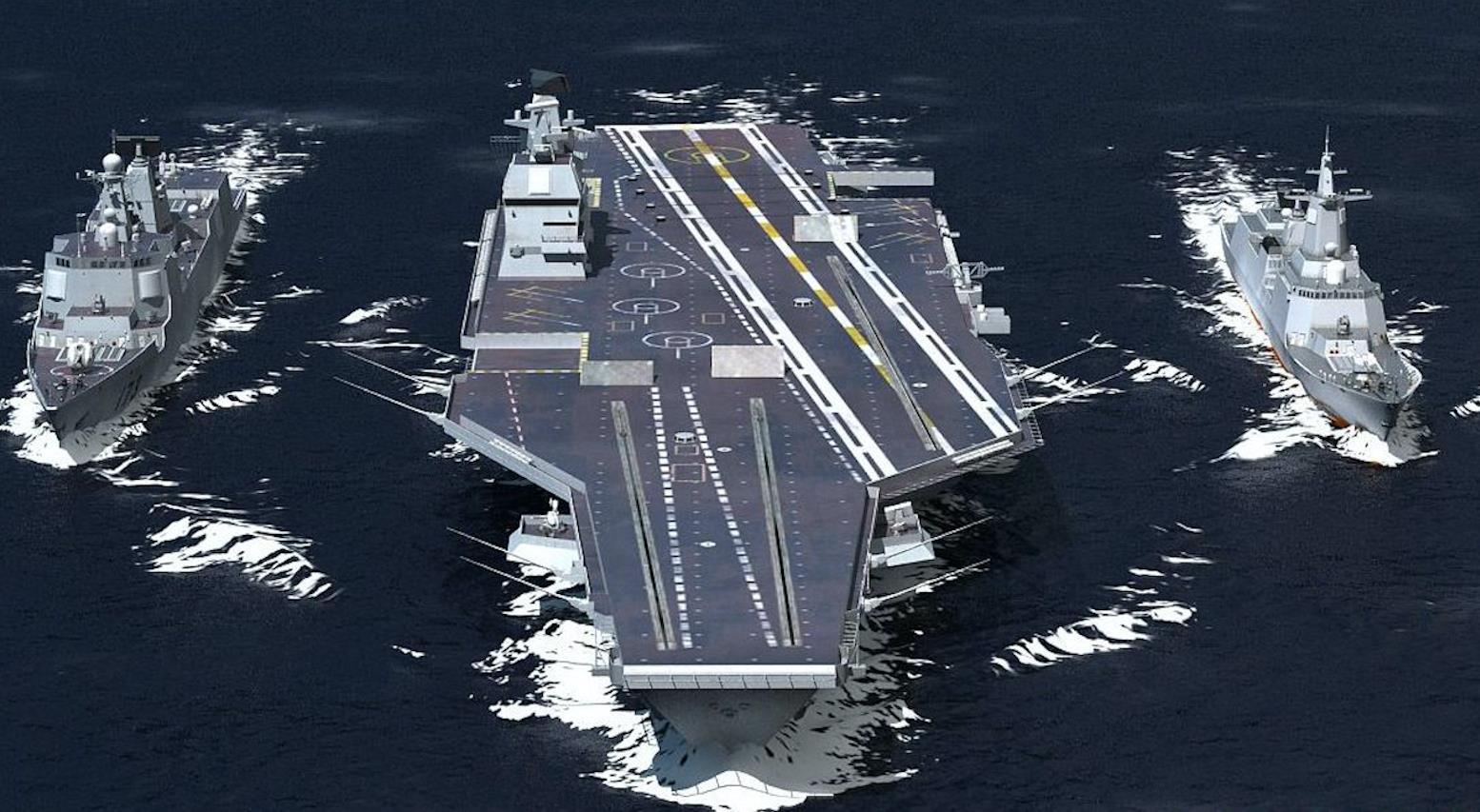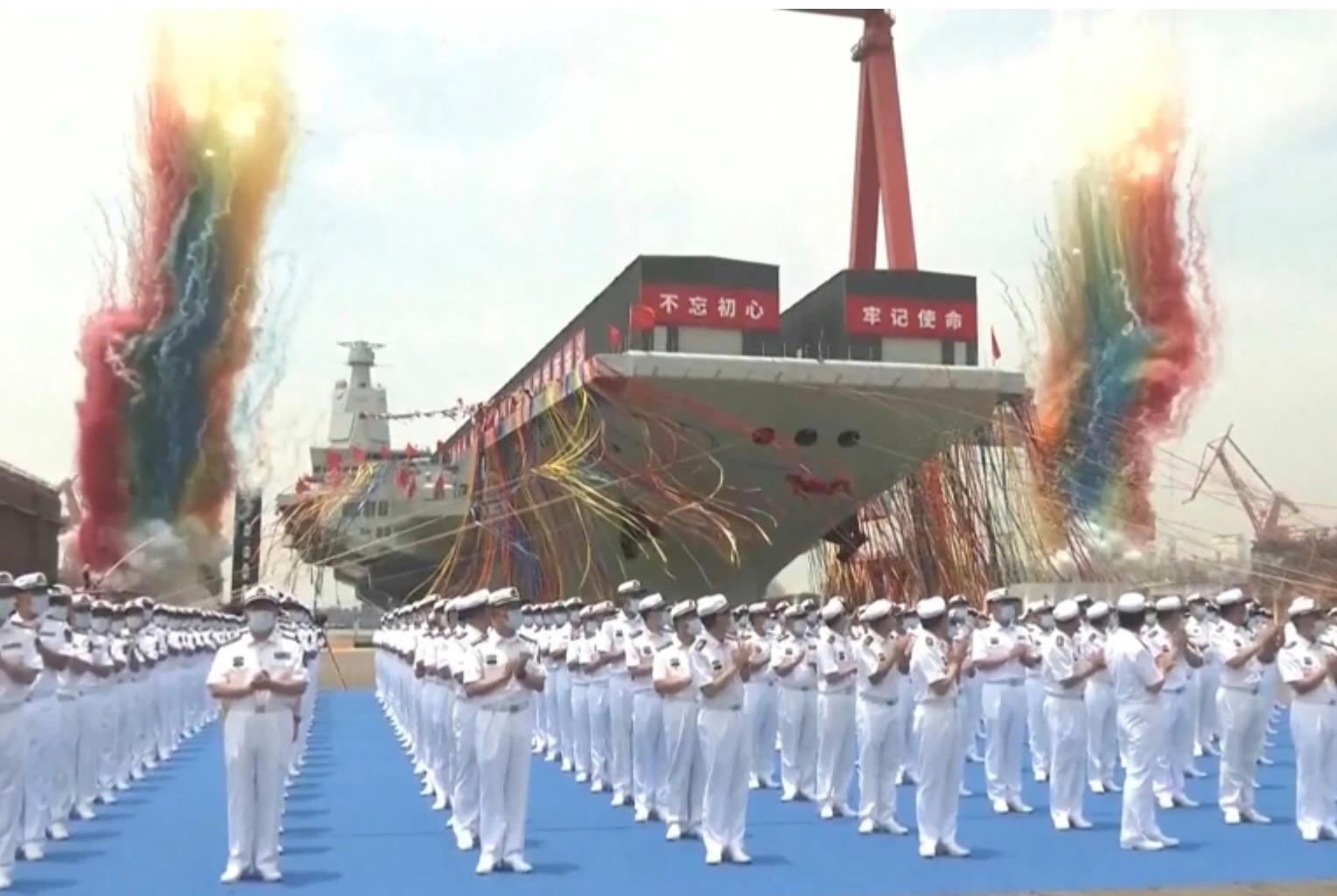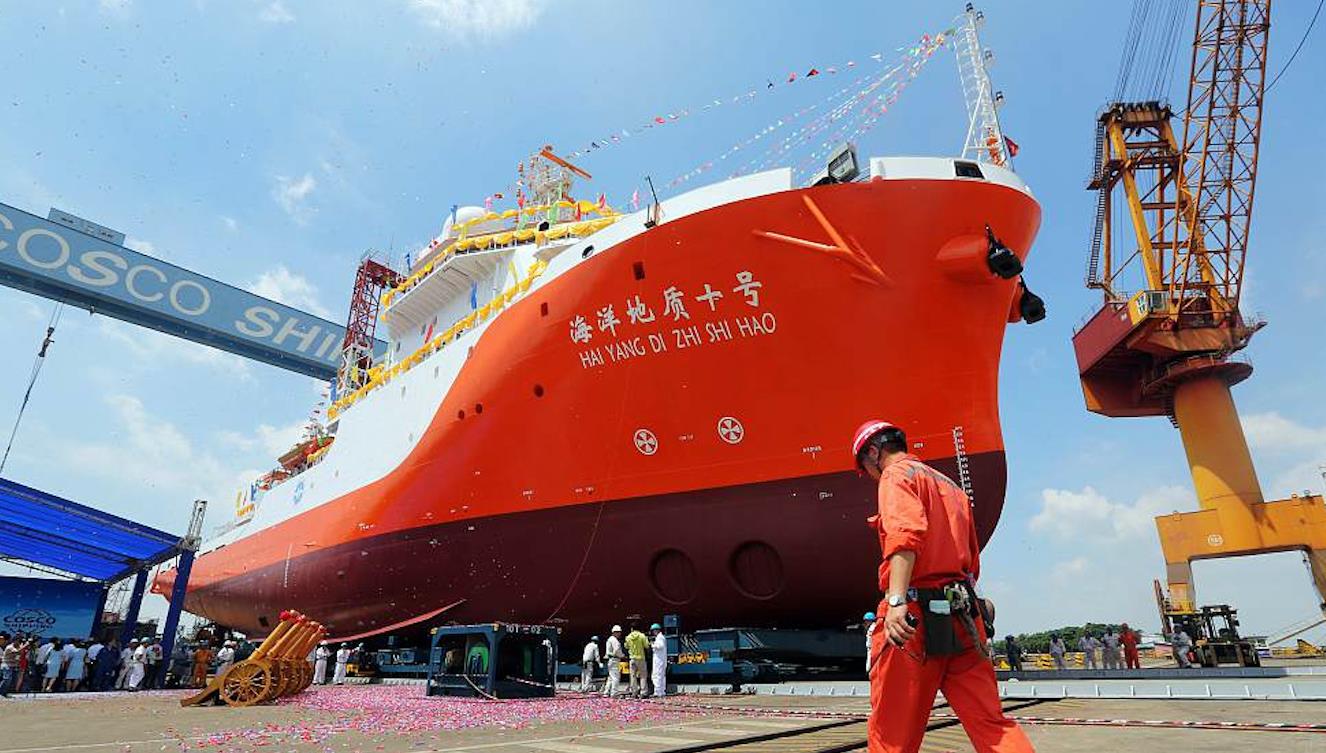(MENAFN- Asia Times) Building on the Fujian aircraft carrier's success, China's carrier development program is gaining steam with the recent unveiling of its nuclear-powered supercarrier concept.
this month, the warzone reported that China's Jiangnan Shipyard has released concept art of what appears to be a nuclear-powered supercarrier similar to the US Gerald Ford class and France's Next Generation Aircraft Carrier.
Although the artwork reveals few precise details, the report notes that the design has a catapult-assisted takeoff but arrested recovery (CATOBAR) configuration.
The report says the artwork shows numerous stealth aircraft similar to the FC-31 on the carrier's deck, hinting that the plane may form the backbone of this new carrier's air wing.
China has been incrementally approaching its carrier program, first learning carrier operations before moving on to nuclear propulsion.

Concept art of a Chinese nuclear-powered aircraft carrier. Photo: DefenceTalk / Screengrab
a 2017 center of strategic and international studies commentary noted that the Liaoning and Shandong both have small fighter wings, with just 18-24 J-15 fighters for the Liaoning and four more jets for the Shandong. The relatively small complement of fighter aircraft carried by both ships presents China with an offense-defense dilemma.
asia times noted last august that such a small complement of aircraft poses limitations on how much of the Liaoning and Shandong's respective air wings can be dedicated for attack or defense.
Allocating more aircraft to attack increases the vulnerability of their respective carrier battlegroups, but committing more aircraft to fleet air defense diminishes their attack power. However, the Fujian, which can carry between 50-70 aircraft, could overcome those challenges.
The Fujian is also equipped with China's version of the electromagnetic launch system (EMALS), which uses powerful electromagnets to launch aircraft, enabling the launch of additional and heavier types of aircraft faster.
These aircraft could include improved J-15Bs, naval versions of the J-20 and FC-31, and J-600 airborne early warning and control (AWACS) planes and drones.
Moreover, asia times reported that China might be preparing to deploy the FC-31 stealth fighter and the FH-97A Loyal Wingman drone from the Fujian. The carrier-based version of the FC-31, dubbed the J-35, may be used for air supremacy missions.
At the same time, the improved J-15Bs perform ground and sea attacks, possibly eliminating the offense-defense dilemma associated with Liaoning and Shandong.
The J-35 may be complemented by a carrier-based version of the FH-97A, with the land-based version optimized for air-to-air operations, with a front-mounted electro-optical targeting system (EOTS) and internal weapons bay for six air-to-air missiles.
With the offense-defense dilemma possibly surmounted, the next step in improving China's carrier warfare capabilities will be to eliminate the range and endurance limitations related to conventionally-powered ships.
asia times reported last october that China's fourth carrier will most likely be nuclear-powered, with China State Shipbuilding Corporation (CSSC) developing a nuclear-powered carrier design since February 2018 and declaring that it should achieve a breakthrough in nuclear propulsion technology by 2027.

The Fujian aircraft carrier's launch party. Image: Twitter
At present, however, China's nuclear propulsion technology lags way behind the US. south china morning post (scmp) notes in an article from last june that developing a nuclear-powered supercarrier cannot be rushed for safety and scientific reasons.
The report notes that China's Linglong One small modular reactor, considered its most advanced model, needs to be refueled once every two or three years, compared with the reactor on a Ford-class carrier that can operate for half a century.
Nevertheless, in the event of a Taiwan contingency, a Chinese nuclear-powered carrier can reduce the need to break off operations and resupply, increase sortie rates by combat aircraft and strengthen a possible Taiwan blockade by providing a persistent presence.
Given the strategic importance of carriers, China may aims to have a six-carrier navy, with its three fleets operating two carriers each.
In such a configuration, one carrier would be on active deployment while another would undergo maintenance, refitting and crew training.
Building such a navy may already be within China's shipbuilding abilities. Asia Times noted in february china's massive shipbuilding production rate and its use last month of artificial intelligence (ai) to accelerate warship design processes .
As of 2022, the PLA-N was the world's largest navy with 340 ships; the US Navy, in comparison, has only 280 ships. China also has 13 naval shipyards, with each facility having more capacity than all seven US naval shipyards combined.
China's massive shipbuilding lead over the US can be partly attributed to its civil-military fusion strategy, with the concurrent building of warships and civilian ships in the same shipyards ensuring that its shipbuilding industry operates at capacity despite economic downturns.
The fusion strategy also applies civilian mass-production techniques and advanced technologies to naval shipbuilding, allowing it to maintain surge production capability and also circumvent sanctions targeting its military modernization program.
Moreover, China has used an AI operating on a small computer that reputedly allows it to design a warship's electrical systems in a day. This task would have taken human designers with the most advanced computer tools 300 days to complete.

China now has more naval vessels than the US. Image: Xinhua
Although building a six-carrier navy at astonishing speed is one thing, producing the required numbers of professional sailors, airmen and marines is quite another.
Given that, Edward Luttwak noted in an unherd article last month that a manpower shortage has undercut the PLA-N's spending plans.
Luttwak says that's because young and talented Chinese who can absorb high-level technical skills are turning down military jobs due to low pay compared to the civilian sector and a reluctance to serve under strict military discipline and hierarchy.
Like this:Like Loading...























Comments
No comment